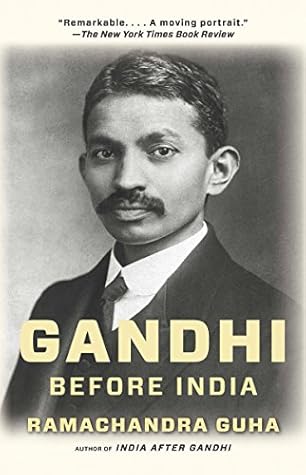More on this book
Community
Kindle Notes & Highlights
Ranade was keenly aware of the humiliations that Indians were prepared to heap on their own kind. ‘Was this sympathy with the oppressed and down-trodden Indians,’ he wondered, ‘to be confined to those of our countrymen only who had gone out of India?’ Or would it be extended to a condemnation of the shameful manner in which low castes were treated within India? Ranade asked ‘whether it was for those who tolerated such disgraceful oppression and injustice in their own country to indulge in all that denunciation of the people of South Africa’.10
Dharma, said the seer, did not ‘mean reading or learning by rote books known as Shastras or even believing all that they say’. It was a combination of theoretical learning and practical knowledge. After a certain level of religious instruction, the scriptures could help no further; but one’s own experience certainly could.
Muslims and a Tamil, met Selborne in his office.
Interesting choice of words whenever mixed background is involved. Muslims are always identified as Muslims irrespective of their background in this book. However he uses Tamils, Gujaratis, Telugus, Reddys instead of referring them as Hindus. Even Jews and parsis mentioned by religion. Even Tamil Christians, he makes sure to mention religion
For some strange reason, laborers or otherwise of Hindu sect, he uses different denomination to identify
‘it is not for me to say whether the revolt of the Kaffirs is justified or not. We are in Natal by virtue of British power. Our very existence depends upon it. It is therefore our duty to render whatever help we can …
Driven by selfish motives? perhaps that's how people mostly are.. But when it came to Hindu interests or India's interests post partition where was it?
Gandhi had conveyed in Indian Opinion his admiration for the Swadeshi movement in British India. This admiration was shared by his colleagues – hence the appreciative reference in Hajee Habib’s speech to the incarceration of the militant nationalist Bal Gangadhar Tilak. The idea of protest and sacrifice was more directly influenced by the events in India in 1905–6.
A week later Gandhi visited Durban himself. Speaking to the Natal Indian Congress, he observed with some pride that in India, ‘the Government succeeds by setting the two cats – Hindus and Muslims – against each other.
To Gandhi 's point, this explains why he consistently favored and worked for unity. What he forgot was that India is a different terrain with a completely different problem.
had deliberately defied the Government and had taken up a very serious position – one which he was sorry to see any resident in this country adopt. It had been a mistake, he had no doubt, which had been copied from the [Nonconformist] passive resisters at Home in connection with the Education Bill, and that was an attitude which had never appealed to him in any shape at all. The laws of a country must be complied with by the people resident there, and if they could not do that, there was but one alternative – such people must go somewhere else.
the sincere effort made by each individual person to coordinate one’s life and actions with those moral foundations one considers to be true, regardless of the demands of family, society, and government’.56 This, precisely, was the goal that Gandhi and Kallenbach had set themselves.
Indian religious traditions placed a very high value on abstinence from sexual pleasure.
Wrong. Remember it is land of Kamasutra. Sure moderation was emphasized. Moderation suggested actually for everything
Grahastasrama is a dharma. You are never asked to give that up. Many vaishnava acharyas are not sanyasis. Specifically calling out vaishnavism because that was Gandhi 's background
The walls dividing continents are breaking down: everywhere European, Asiatic and African will inter-lard. The world on which the twenty-first century will open its eyes, will be one widely different from that which the twentieth sees at its awakening. And the problem which this century will have to solve, is the accomplishment of this interaction of distinct human varieties on the largest and most beneficent lines, making for the development of humanity as a whole, and carried out in a manner consonant with modern ideals and modern social wants. It will not always be the European who forms
...more
This suggests that whereas the Transvaal Government thought Gandhi to be a common criminal, in the eyes of his friends and supporters he was (as Henry Polak put it) ‘a political prisoner, fighting for conscience’s sake and the self-respect of his people.’
The conventional wisdom has it that it was the poet Rabindranath Tagore who, around 1919, first began to call Gandhi ‘Mahatma’, after he had become a major figure in Indian politics. An alternate claim has been made on behalf of the Gujarat town of Gondal, which seems to have conferred the title on Gandhi when he visited it on his return from South Africa in 1915. Pranjivan Mehta preceded them both – although, of course, in a private letter rather than a public declaration.
those who lived (and died) by the gun, Gandhi said the claim that ‘there is no connection between the means and the end is a great mistake’. He spoke of how the wrong means produced an escalating cycle of violence and counter-violence.
The escalation will continue until one side establish that they are decisively stronger. Other approach could intimidate and pre empt like Peace through strength


